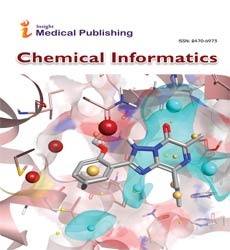Abstract
Role of catalysis in sustainable chemistry
Background: Sustainable Chemistry aims at the design of products which minimize the use and generation of harmful substances which have an adverse effect on the environment. Sustainable Chemistry is based on the 12 Principles of Green Chemistry enunciated by Paul Anastas and John Werner in the 90’s, which provide a blueprint for sustainable development. Among these, the use of catalysts to improve atom economy and yield of reactions is most important. Catalysts are the pillars of Green Chemistry and worldwide, there is a constant search for novel catalysts.
Atom economy of a chemical reaction is a theoretical measure of the amount of starting material which has got converted into the desired useful product and is a reliable metrics of the greenness of a reaction.
%Atom economy =[mass of desired product]/[total mass of all products]100 Thus, 100% atom economy means 0% waste.
Green catalysts are preferred because of their distinct advantages:
1) better atom economy,
2) minimum waste production,
3) ecofriendly products and emissions,
4) reusability
Methods:
Illustration1: The atom economy of the extraction of iron from its ore using carbon can be calculated as follows:
2Fe2O3 + 3C --------- 4Fe + 3CO2
Mass of reactants=2[2x55.84 + 3x16] + 2[12] = 355.36 amu
Mass of products =4[55.84] + 3[44] =355.36 amu
The desired product is Fe
% Atom economy= [mass of desired product/total mass of all products]
X 100
= [ 4(55.84)/355.36] x 100 = 62.85%
Illustration 2: Aniline can be prepared by old and new methods
The old method used FeCl3.HCl as the catalyst
4C6H5NO2 + Fe + 4H2O --------- 4C6H5NH2 + 4Fe2O3
Nitrobenzene Aniline
% Atom economy=35%
The new method uses Nickel catalyst at 3000C and 5 psi pressure.
C6H5NO2 + 3H2 ------------ C6H5NH2 + 2 H2O
% Atom economy=72%
Illustration 3: Adipic acid is a very important starting material for the manufacture of Nylon 6.
Adipic acid
The conventional method uses carcinogenic benzene as the starting material, Ni/Al2O3 as the catalyst and nitric acid as the oxidizing agent. Nitric acid produces nitrous oxide N2O which contributes to the greenhouse effect and destruction of ozone in the stratosphere.
The reaction takes place in 3 steps and has atom economy 55.7%
In the new method (greener method), the starting material is Cyclohexene, Na2WO4 is the catalyst and 30 % H2O2 is the oxidizing agent. This one step synthesis proceeds in aqueous medium at a lower temperature and has atom economy 67%.Both the reactant and product are environmentally benign.
2) Optimization of reaction yield
A catalyst should improve the yield of a reaction.
Illustration 4: Ibuprofen is an analgesic drug just like Aspirin (Acetyl Salicyclic acid)
Ibuprofen
2-Methylpropyl benzene is the starting material for both the conventional and new methods of synthesis.
2-Methylpropylbenzene
The original synthesis required 6 steps and resulted in the production of secondary by products which were a waste.The catalyst anhydrous AlCl3 was not efficient as it got hydrated and was rendered ineffective.The yield was 40%
The new method uses Raney nickel as catalyst which can be recycled and reused. The yield is 77%
Illustration 5 : Nickel catalyst increases the yield of hydrogenation of propene to almost 100%
CH3CH=CH2 + H2 -------- CH3CH2CH3
Propane
RESULTS
Consumption indicators in Ukraine decreased from 11.5358 DID in 2013 to 10.0884DID in 2015 and increased from 11.0792 DID in 2016 to 12.4731 DID in 2018.
The consumption in the United Kingdom has decreased from 18.2765 DID in 2013 to 16.2636 DID in 2018, despite a slight increase in 2014 (18.5068 DID).
Throughout the study period, antibiotics were consumed more in the United Kingdom than in Ukraine. The largest difference in antibacterial for systemic use consumption between the two countries was recorded in 2015 (1.8 times).
Conclusion
Sustainable Chemistry focuses on the design of products that minimizes the use and generation of hazardous starting materials. The use of green catalysts improves atom economy and efficiency of reactions.
Sustainable Chemistry should be incorporated in a big way in the curriculum to understand the principles of Green Chemistry based on the 3R’s –Reduce, Reuse and Recycle and to learn to modify the existing processes to make them environmentally friendly.
Keywords
Sustainable Chemistry, Green catalysts, atom economy, reaction yield, biocatalysts, enzymes, nanocatalysts, phase transfer catalysts.
Author(s):
D V Prabhu
Abstract | Full-Text | PDF
Share this

Google scholar citation report
Citations : 173
Chemical Informatics received 173 citations as per google scholar report
Abstracted/Indexed in
- Google Scholar
- China National Knowledge Infrastructure (CNKI)
- Directory of Research Journal Indexing (DRJI)
- WorldCat
- Geneva Foundation for Medical Education and Research
- Secret Search Engine Labs
- CAS (Chemical Abstracting Services)
Open Access Journals
- Aquaculture & Veterinary Science
- Chemistry & Chemical Sciences
- Clinical Sciences
- Engineering
- General Science
- Genetics & Molecular Biology
- Health Care & Nursing
- Immunology & Microbiology
- Materials Science
- Mathematics & Physics
- Medical Sciences
- Neurology & Psychiatry
- Oncology & Cancer Science
- Pharmaceutical Sciences

